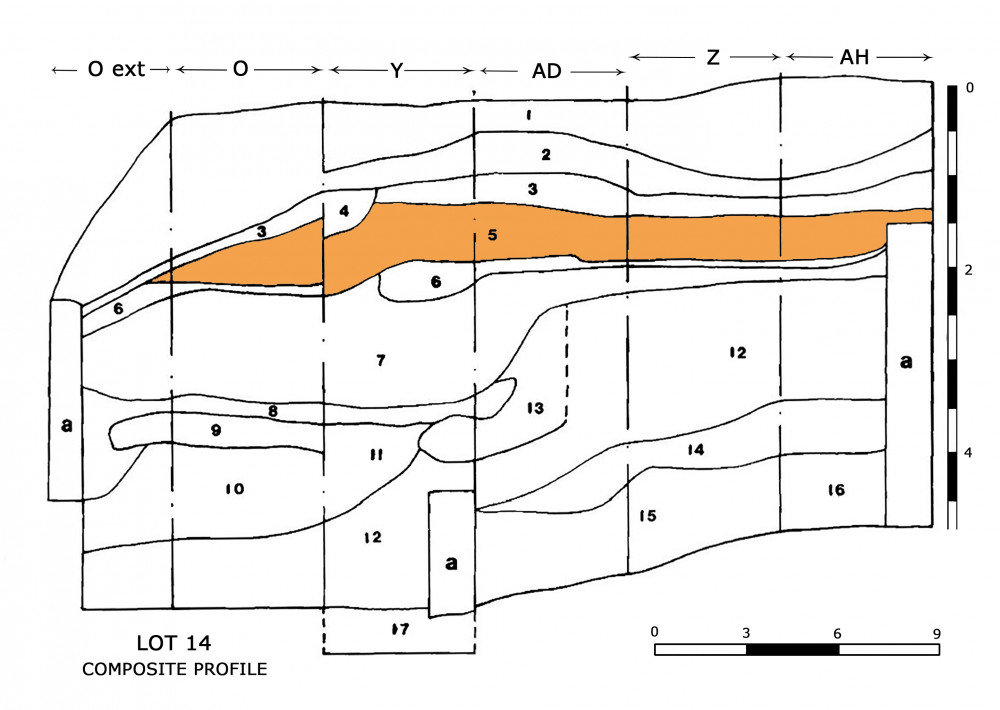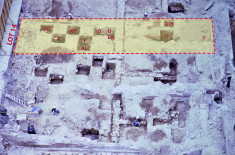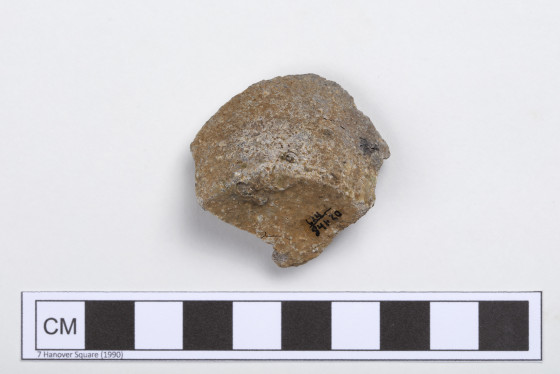Excavations in the northern portion of Lot 14 revealed the remains of a domestic midden that was likely deposited in the basement of a structure which stood on this lot during the 17th century. Beneath the second mortar floor, the excavations encountered an 8-12 inch thick layer which consisted primarily of a black silty soil containing burnt wood and charcoal with inclusions of a grayer ashy soil. Test cuts were placed in a "checkerboard" pattern in an attempt to uncover the full extent of the midden and allow for a continuous north-south profile. Four of the seven test units placed in the north portion of Lot 14 involved the excavation of three separated levels within the midden deposit. Two midden levels were excavated in two of the other test cuts. These levels were analyzed separately in order to determine whether the deposit was accretional. This context (Catalog #841, Lot 14, Test Cut Y, Stratum 14, Level a) consists of artifacts from the third level of the midden from one of the seven test cuts excavated in Lot 14.
Analysis of the ceramic types present and the cumulative frequency curves suggest that accumulation of the midden deposit began in the early 18th century. Accumulation of the deposits may have ended in the 2nd quarter of the 18th century. Please see page 254-260 of the site report for a more detailed analysis of the midden deposit in Lot 14.
-
Collection method
This level was excavation using trowels. All soil was dry-screened through 1/4 inch mesh.
-
Soil description
Gray silty ash with shell and large stones
-
Munsell
Not recorded







